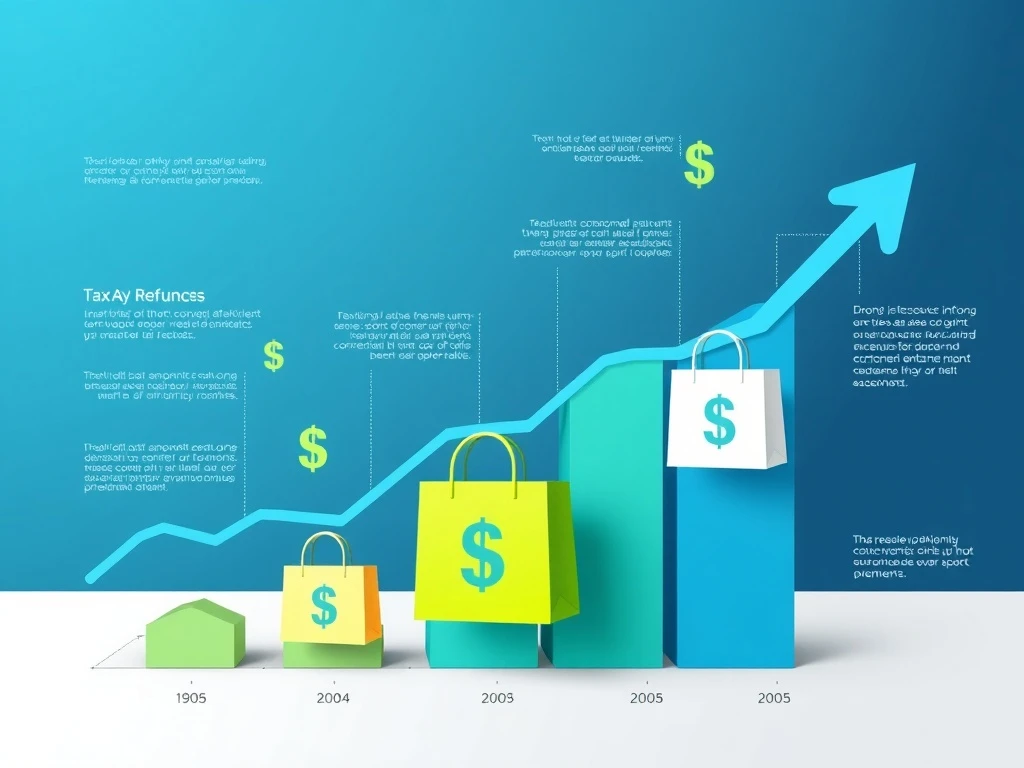JPMorgan’s latest analysis reveals an unprecedented tax refund surge poised to inject billions into the economy, creating significant opportunities for investors and reshaping market dynamics in the coming quarters.
Understanding the Tax Refund Surge Phenomenon
JPMorgan analysts project a substantial tax refund surge this fiscal year. Consequently, this injection of capital will directly impact consumer behavior. Moreover, the timing coincides with key economic indicators showing resilience. Therefore, markets should prepare for increased liquidity.
Economic Implications of Massive Refund Distribution
The projected tax refund surge will likely boost consumer spending across multiple sectors. Retail, automotive, and housing markets particularly stand to benefit. Additionally, this stimulus effect could accelerate GDP growth. However, inflationary pressures may require monitoring.
Market Sector Analysis and Projections
JPMorgan identifies several sectors positioned for growth from this tax refund surge. Consumer discretionary stocks show particular promise. Furthermore, financial services may experience increased activity. Technology investments could also see upward momentum.
Investment Strategies During Refund Season
Investors should consider reallocating assets ahead of the tax refund surge. Historically, consumer-focused ETFs perform well during these periods. Additionally, small-cap stocks often benefit from increased spending. However, proper risk assessment remains crucial.
Long-term Economic Outlook Post-Surge
The sustained effects of this tax refund surge could extend beyond immediate spending. Small business growth may accelerate significantly. Moreover, debt reduction could improve household financial health. Consequently, economic stability might strengthen.
Risk Factors and Considerations
While promising, the tax refund surge carries certain risks. Market overheating remains a potential concern. Additionally, supply chain constraints could limit benefit realization. Therefore, cautious optimism represents the recommended approach.
FAQs: Tax Refund Surge and Economic Impact
What magnitude of tax refund surge does JPMorgan predict?
JPMorgan anticipates approximately 15-20% higher refund distributions compared to previous years, representing billions in additional consumer liquidity.
Which demographic groups benefit most from increased refunds?
Middle-income households and families with children typically receive the largest proportional benefits from tax refund increases.
How quickly do refunds typically impact consumer spending?
Approximately 70% of refund recipients begin spending within the first month, with full economic impact realized within one quarter.
Do tax refund surges affect inflation rates?
Moderate inflationary pressure often follows large refund distributions, though Federal Reserve policies usually mitigate significant impacts.
Which investment sectors historically perform best during refund seasons?
Consumer discretionary, retail, and financial services sectors typically show strongest performance during and immediately after tax refund periods.
How should investors adjust portfolios ahead of refund distribution?
Diversification into consumer-focused assets while maintaining balanced exposure to defensive sectors represents the most prudent strategy.








